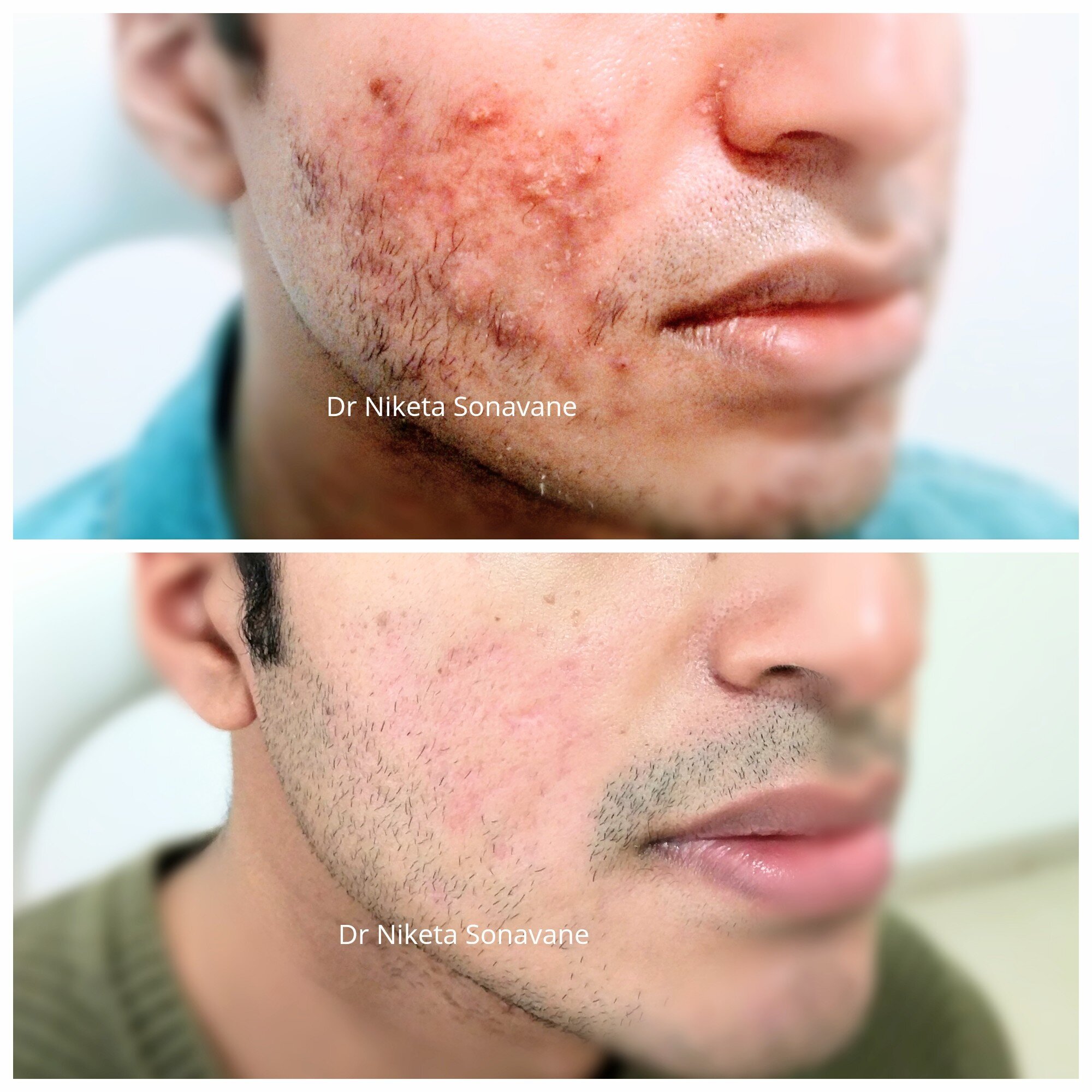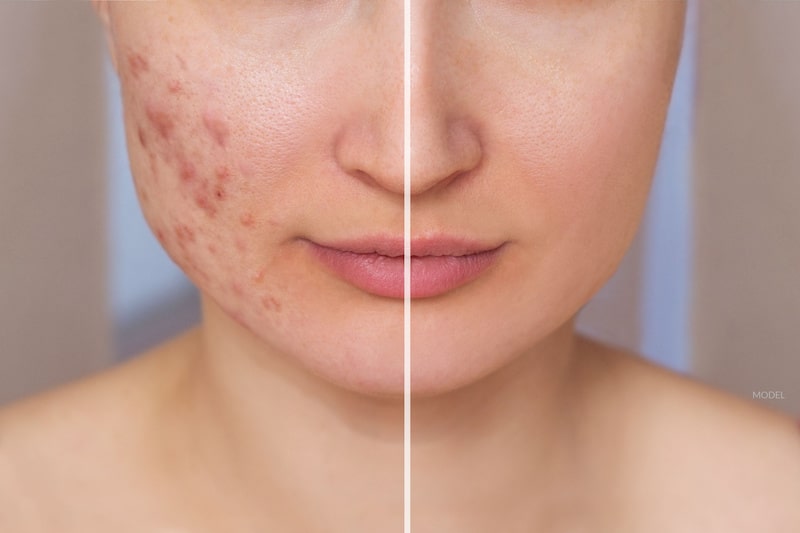Targeted Acne Scars Treatment: Attain Smooth, Also Complexion
Targeted Acne Scars Treatment: Attain Smooth, Also Complexion
Blog Article
Exploring Skin Problems: Recognizing and Treating Acne Scars for Healthier Skin
Acne marks stand for a substantial concern for people looking for to preserve healthy skin, as they can influence both look and self-confidence. Comprehending the various kinds of scars, from atrophic to hypertrophic, is necessary for figuring out suitable treatment options.
Recognizing Acne Scars

The body's natural recovery procedure can result in either atrophic scars, which look like depressions in the skin, or hypertrophic scars, which are elevated and result from overproduction of collagen. Furthermore, the emotional toll of acne scars must not be underestimated; numerous people report feelings of humiliation, anxiety, and lowered self-esteem. This psychological burden can impact social communications and general top quality of life.
Addressing acne scars needs a detailed understanding of their development and effect. Recognition of the possibility for lasting consequences connected with without treatment marks can inspire people to look for proper therapies. Early treatment and efficient monitoring approaches can dramatically improve skin look and improve mental durability, highlighting the importance of understanding the complexities surrounding acne marks.
Sorts Of Acne Marks
Acne scars can be categorized into distinctive kinds, each displaying special features and calling for certain treatment methods. acne scars. The key kinds of acne marks include atrophic, hypertrophic, and keloid scars

Hypertrophic scars, in comparison, are raised over the skin level and are the result of too much collagen production during the recovery procedure. They typically stay within the boundaries of the initial acne sore. Keloid scars are similar however expand beyond the original injury site, forming bigger, elevated locations that can be uncomfortable or scratchy.
Understanding these types of scars is vital for choosing ideal therapy options. Different scars may respond far better to specific therapies, such as laser treatments, fillers, or medical treatments, stressing the importance of a tailored method to acne scar administration.
Recognizing Your Scars
Acne marks typically fall right into 2 categories: atrophic and hypertrophic marks. These can further be classified into ice-pick scars, boxcar scars, and rolling scars, each displaying unique qualities and calling for various approaches for assessment.
Hypertrophic marks, on the various other hand, are elevated and occur due to my latest blog post extreme collagen manufacturing throughout the healing process. Recognizing the particular functions of your marks-- such as width, deepness, and structure-- is important for appropriate identification (acne scars treatment). In addition, consider the circulation of marks across your skin, as this can suggest the severity and period of the acne problem
Involving with a skin specialist can supply important understandings right into the nature of your scars, aiding in the distinction in between different types. An extensive understanding of your scars will inevitably bring about a much more tailored and effective therapy strategy, guaranteeing a clearer and much healthier skin tone.
Treatment Alternatives Readily Available
Determining the particular sort of acne marks present on your skin lays the groundwork for discovering efficient treatment choices. Typical kinds of acne marks include atrophic (clinically depressed), hypertrophic (increased), and post-inflammatory erythema.
For atrophic scars, alternatives such as chemical peels, microneedling, and laser resurfacing are commonly used. Chemical peels off use acids to remove the external layer of skin, promoting brand-new cell growth. Microneedling entails small needles that create micro-injuries, promoting collagen production. Laser resurfacing targets harmed go to my blog skin cells, improving appearance and tone.
Hypertrophic scars can be treated with corticosteroid shots to flatten the scar or laser treatment to decrease soreness and enhance look. Silicone gel sheets and pressure dressings may additionally help in taking care of increased marks.
On top of that, dermal fillers can momentarily fill in clinical depressions from atrophic scars, while medical excision might be proper for extreme cases. Each treatment alternative has its benefits and considerations, making it important to seek advice from a skin doctor. They can offer individualized suggestions based on the type and intensity of your marks, as well as your skin type and general wellness.
Tips for Avoidance
Reliable avoidance methods can dramatically lower the chance of creating acne marks. Utilizing non-comedogenic products helps avoid stopped up pores, which can aggravate acne.
Preventing the desire to select or stand out acne sores is essential, as this can lead to much deeper skin damages and enhance the risk of scarring. Rather, take into consideration utilizing a cold compress or have a peek at this website over-the-counter therapies to lower swelling and soreness.
Sunlight security is another essential element of prevention; ultraviolet (UV) rays can dim marks and hinder the recovery process. Applying a broad-spectrum sun block with a minimum of SPF 30 daily can safeguard the skin and promote even healing.
Last but not least, preserving a balanced diet regimen abundant in anti-oxidants, minerals, and vitamins sustains skin health and recovery. Staying hydrated and managing stress and anxiety levels can additionally play a considerable role in lowering acne flare-ups. By executing these strategies, individuals can significantly decrease their chances of creating acne scars.
Verdict
In conclusion, understanding and recognizing acne scars is crucial for effective therapy and achieving healthier skin. Numerous kinds of acne scars, including hypertrophic and atrophic scars, require details interventions tailored to specific needs. Treatment options range from chemical peels and microneedling to corticosteroid injections, stressing the importance of getting in touch with a skin doctor. In addition, taking on a gentle skincare regimen and protecting the skin from UV exposure can dramatically contribute to the prevention of additional scarring and general skin wellness.
The body's natural healing process can result in either atrophic scars, which appear as depressions in the skin, or hypertrophic scars, which are raised and result from overproduction of collagen. They are further split into three subtypes: ice pick scars, boxcar scars, and rolling marks. Acne marks usually drop right into 2 classifications: hypertrophic and atrophic marks. These can additionally be identified right into ice-pick scars, boxcar scars, and rolling scars, each exhibiting distinct qualities and requiring different methods for assessment.
Various kinds of acne marks, consisting of atrophic and hypertrophic scars, require particular interventions customized to individual demands.
Report this page